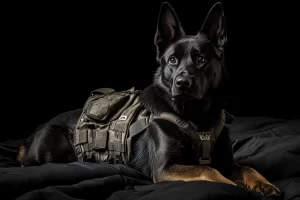Six Reasons to Consider a Working Line Czech German Shepherd
Czech German Shepherds are widely regarded as some of the world’s finest working line German Shepherds. Unlike show-line dogs, Czech working dogs were bred to perform! They excel in protection, search and rescue, and obedience. Their strength lies in their working abilities, temperament, and health. If you are looking for a GSD of the highest caliber, a Czech German Shepherds could be just what the doctor ordered. Here at Czech Working Line, we specialize in Czech German Shepherd for sale. We hope you find this article to the point, clear, and helpful. Check back often for more articles on a wide variety of training topics.
1. Superior Work Ethic and Focus of Czech German Shepherds
Czech German Shepherds have an exceptional work ethic. Generations of selective breeding emphasize discipline and drive. These dogs thrive in environments that require focus and endurance. From Schutzhund trials to law enforcement roles, they excel under pressure. Their ability to maintain concentration in complex situations sets them apart.
Research shows that working-line German Shepherds outperform other lines in problem-solving and task-focused exercises (Rooney et al., 2007). Czech-bred dogs display this focus naturally. They are hardwired to complete tasks without distraction. This quality makes them ideal for families who need a home protection dog or a working partner.
2. Calm Yet Assertive Temperament
Temperament is critical in choosing a working line German Shepherd. Czech lines display a calm yet assertive nature. These dogs are confident but not overly aggressive. This makes them reliable for protection work while ensuring safety in the home.
Studies show that German Shepherds bred for work exhibit lower reactivity and better stress control (Svobodová et al., 2012). Czech dogs reflect this balance. They switch seamlessly between calm obedience and active protection when needed. Their confident demeanor allows them to handle unfamiliar situations without fear.
For families, this means Czech German Shepherds can act as guardians without unpredictable behavior. They are attentive to their surroundings while remaining affectionate toward trusted family members.
3. Robust Physical Health of Czech German Shepherds
Health problems plague many German Shepherd lines. Show-line breeding often emphasizes appearance over function, leading to sloped backs and weak joints. Czech working lines prioritize physical strength and soundness. Their straight backs and durable joints reduce the risk of hip and elbow dysplasia.
A study on hip dysplasia in working dogs found lower rates in performance-bred German Shepherds compared to show dogs (Smith et al., 2018). Czech German Shepherds benefit from these rigorous breeding standards. Their lineage emphasizes longevity and functional health.
This durability allows them to handle physically demanding tasks. Whether protecting property or training for sport, their strong structure ensures long-term performance.
4. Natural Protective Instincts
Czech German Shepherds possess strong yet controlled protective instincts. This trait comes from their history of service work. They were bred to guard borders and protect handlers under intense conditions. Unlike reactive dogs, Czech lines demonstrate controlled aggression. They act only when necessary.
Research highlights that protection-bred German Shepherds show lower fear responses and higher discernment in threatening situations (Arvelius et al., 2014). Czech lines embody these qualities. They assess threats before reacting, ensuring appropriate responses.
This controlled instinct makes them reliable home protection dogs. They protect without posing unnecessary risks to family members or guests. For homeowners, Czech German Shepherds offer peace of mind through dependable security.
5. Czech German Shepherds Bred For High Intelligence
Czech German Shepherds rank among the most intelligent working dogs. Their mental sharpness allows them to excel in advanced training. Tasks such as scent detection, obedience trials, and bite work come naturally to them. Their eagerness to learn makes training enjoyable and effective.
A study on canine cognition confirms that German Shepherds consistently perform well in complex problem-solving tasks (Marshall-Pescini et al., 2017). Czech lines amplify this intelligence with their intense drive to work. They are quick to understand commands and thrive in structured environments.
For families, this intelligence means they are easy to train for protection and obedience roles. Their ability to adapt to new scenarios makes them versatile working dogs.
6. Proven Pedigrees from Schutzhund, Titled Parentage
Czech German Shepherds come from carefully monitored bloodlines. They were originally bred for border patrol in Czechoslovakia. This history of strict selection produced dogs with unmatched reliability. Only dogs demonstrating strong performance traits were used for breeding.
Research on working line breeding programs emphasizes the importance of lineage consistency for temperament and health (Wilsson & Sundgren, 1997). Czech German Shepherds continue to benefit from these strict standards. Their lineage guarantees predictability in behavior, health, and work ethic.
For buyers, this means confidence in their investment. Czech-bred dogs provide dependable performance and consistent quality. Whether for home protection or work, they deliver reliable results.
Conclusion
Czech German Shepherds offer unique advantages over other working line dogs. Their unmatched work ethic, balanced temperament, and robust health make them a superior choice. With strong protective instincts, high intelligence, and proven lineage, they excel in both family and professional roles. For those seeking a dependable working line German Shepherd, Czech dogs deliver performance and reliability. Investing in a Czech German Shepherd means choosing a partner who can meet the highest demands while remaining a trusted companion.
Bibliography
Arvelius, P., Eken Asp, H., & Fikse, W. F. “Genetic Analysis of Fear-Related Behavior in German Shepherd Dogs.” Applied Animal Behaviour Science, vol. 152, 2014, pp. 105–112.
Marshall-Pescini, S., Frazzi, C., & Valsecchi, P. “The Effect of Training and Breed Group on Problem-Solving Behaviors in Dogs.” Animal Cognition, vol. 20, no. 3, 2017, pp. 493–502.
Rooney, N. J., Bradshaw, J. W., & Robinson, I. H. “Do Dogs Respond to Their Owner’s Emotional State?” Animal Behaviour, vol. 74, no. 3, 2007, pp. 751–759.
Smith, G. K., Biery, D. N., & Gregor, T. P. “New Diagnostic Criteria for Canine Hip Dysplasia.” Veterinary Clinics of North America: Small Animal Practice, vol. 48, no. 1, 2018, pp. 51–62.
Svobodová, I., Víchová, P., & Bártová, M. “Temperament Traits in Working Line German Shepherds.” Journal of Canine Behavior, vol. 9, no. 2, 2012, pp. 123–128.
Wilsson, E., & Sundgren, P. E. “The Use of a Behaviour Test for Selection of Dogs for Service and Breeding.” Applied Animal Behaviour Science, vol. 53, no. 4, 1997, pp. 279–295.




